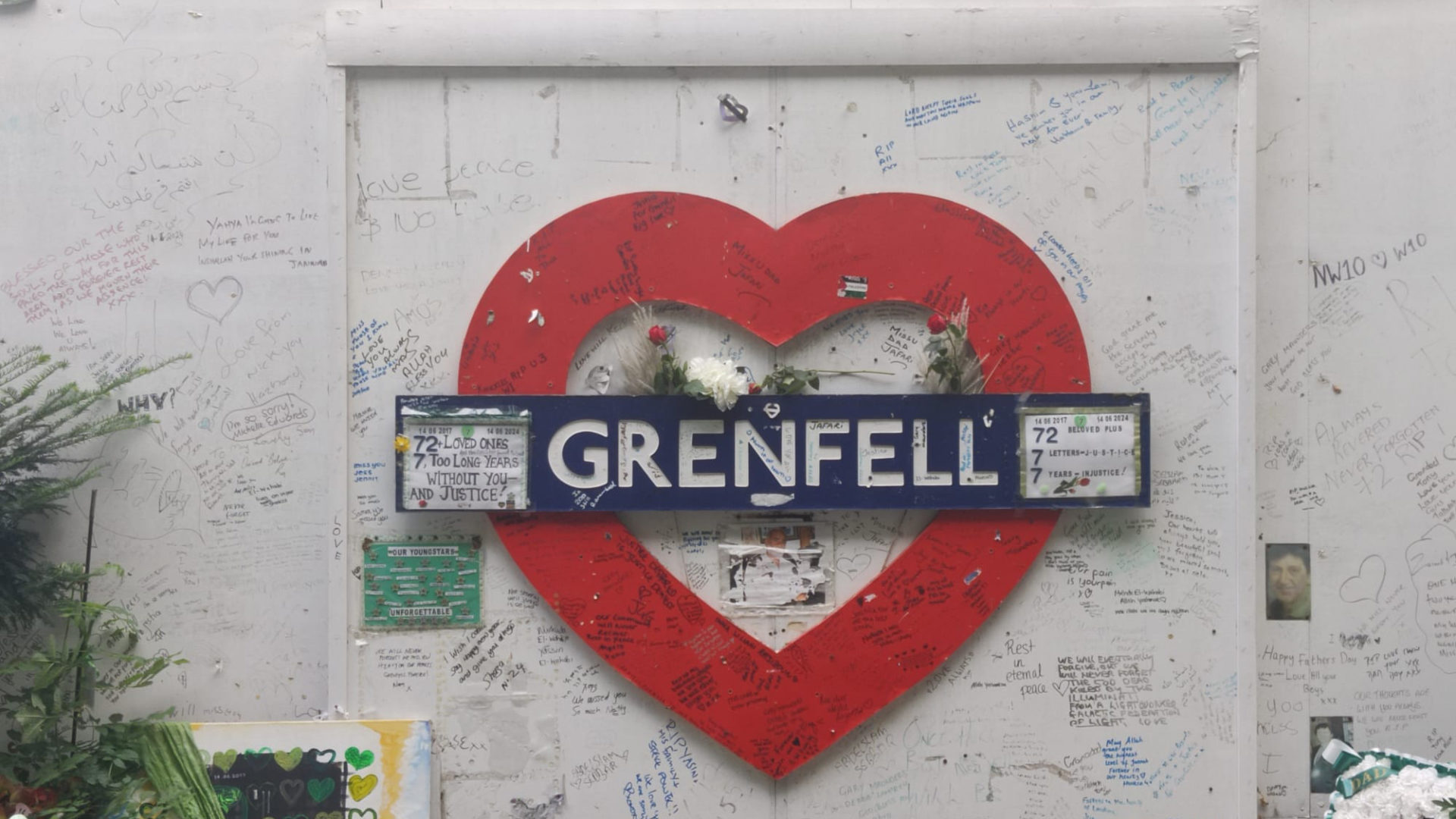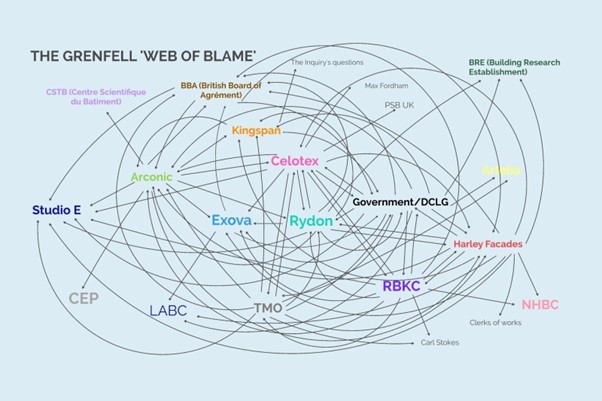
The Grenfell Inquiry has published today (4 September) its second and final report into the fire in the residential tower that killed 72 people on 14 June 2017.
The 1,700-page document criticises the severe failings of government, the construction industry, product manufacturers and the London Fire Brigade that contributed to the avoidable deaths.
The report’s authors are particularly critical of the companies involved in the refurbishment of the tower and the product manufacturers behind the flammable materials that allowed the fire to spread at speed.
Companies involved in the refurbishment
The companies involved in the refurbishment of the Grenfell Tower included Rydon, architect Studio E, fire safety consultant Exova, cladding subcontractor Harley Facades and the Royal Borough of Kensington and Chelsea (RBKC) Building Control.
“None of those involved in the design of the external wall of the choice of materials acted in accordance with the standards of a reasonably competent person in their position,” says the report.
It continues: “The choice of combustible materials for the cladding of Grenfell Tower resulted from a series of errors caused by the incompetence of the organisations and individuals involved in the refurbishment.
“Studio E, Rydon and Harley all took a casual approach to contractual relations. They did not properly understand the nature and scope of the obligations they had undertaken, or, if they did, paid scant attention to them. They failed to identify their own responsibilities for important aspects of the design and in each case assumed that someone else was responsible for matters affecting fire safety. Everyone involved in the choice of the materials to be used in the external wall thought that responsibility for their suitability and safety lay with someone else.”
The report adds that the tower’s landlord, the Kensington and Chelsea Tenant Management Organisation (TMO), “must also take a share of the blame for the disaster” for failing “to take sufficient care in its choice of architect and [pay] insufficient attention to matters affecting fire safety, including the work of the fire engineer”.
“Although our criticisms are directed principally towards Studio E, Exova, Rydon, Harley and RBKC Building Control, the TMO must also bear a share of the blame for the disaster because it failed to ensure the position of Exova was clarified after Rydon had been appointed and that the fire safety strategy was completed.”

Product manufacturers
The report says that “one very significant” reason why the residential block ended up being clad in combustible materials was the “systematic dishonesty on the part of those who made and sold the rainscreen cladding panels and insulation products”.
Those companies include Arconic, the manufacturer of the Reynobond 55 PE cladding panels used in the tower, and thermal insulation manufacturers Celotex and Kingspan.
“They engaged in deliberate and sustained strategies to manipulate the testing processes, misrepresent these data and mislead the market. In the case of the principal insulation product used on Grenfell Tower, Celotex RS5000, the Building Research Establishment was complicit in that strategy.”
On Celotex, the report said that it “presented [thermal insulation product] RS5000 to [specialist cladding subcontractor] Harley as suitable and safe for use on Grenfell Tower, although it knew that was not the case.”
On Kingspan, the Inquiry noted that “from 2005 until after this Inquiry had begun, Kingspan knowingly created a false market in insulation for use on buildings over 18m in height by claiming that [insulation product] K15 had been part of a system successfully tested under BS 8414 and could therefore be used in the external wall of any building over 18m in height regardless of its design and other components.
“That was a false claim, as it well knew, because BS 8414 is a method for testing complete wall systems and its results apply only to the particular system tested. As Kingspan knew, K15 could not honestly be sold as suitable for use in the external walls of buildings over 18m in height generally, but that is what it had succeeded in doing for many years.”
The product certification bodies
The Inquiry concluded that “the dishonest strategies of Arconic and Kingspan” were successful “in a large measure” because of the incompetence and lack of independence of the bodies responsible for product certification, including the British Board of Agrément (BBA), the Local Authority Building Control and the UK Accreditation Service.
It said: “[The BBA’s] failure to adhere robustly to the system of checks it had put in place, and an ingrained willingness to accommodate customers instead of insisting on high standards and adherence to a contract that was intended to maintain them. As a result of systematic shortcomings and inadequate levels of competence and technical expertise among its staff, its scrutiny of the fire performance of K15 and Reynobond 55 E was seriously deficient and the certificates it produced for those products misleading.
“The underlying problem was that the BBA failed to manage the conflict between the need to act as a commercial organisation in order to attract and retain customers and the need to exercise a high degree of rigour and independence in its investigations in order to satisfy those [who] might consider relying on its certificates.”
The report also notes that the National House Building Council, the UK’s largest private Building Control inspector, “failed to ensure that its building control function remained essentially regulatory and free of commercial pressures” and was “unwilling to upset its customers and the wider construction industry by revealing the scale of the use of combustible insulation in the external walls of high-rise buildings, contrary to the statutory guidance”.
Comments
Comments are closed.












Grenfell enquiry does not appear to have suggested the demand for an inexpensive insulative cladding product could have resulted from the panic abolition of asbestos-containing material. Instead of a tiny number of extra possible deaths from mesothelioma over a number of years, we got 72 deaths in one go.
What a disgraceful comment! There are around 2,400 mesothelioma deaths in the UK every year, that’s more than six every day (source: Cancer Research UK), including my brother. So your point is that the trade-off of “a tiny number of possible deaths” (mesothelioma is incurable) over a number of years is a better option? How about, THERE SHOULD BE NO DEATHS! Unbelievable…